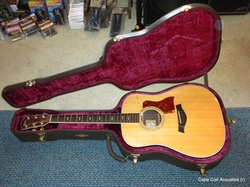Gordon Lightfoot is one who seems to crank out those types of tunes inspired by the depressing weather. "Rainy Day People" is one; although not about rain, his song "Ten Degrees and Getting Colder" (as played by J.D. Crowe and the New South with Tony Rice) is one of my favorites, maybe because of the line about "trading off his Martin..." James Taylor's "Rainy Day Man" is a good one, although James seemed to enjoy being the title character just a little too much.... There are also some awful ones like "Rainy Days and Mondays" (which describes today....arrgghhh!!). But wait. Rain doesn't have to be depressing! "Raindrops Keep Fallin' on my Head" has a somewhat hopeful message, as does "Laughter in the Rain." Maybe it's because Gordon Lightfoot is from Canada where freezing rain is an every day certainty for part of the year that his songs about rain are always degressing!
Anyway, I'm going to look past the weather and hope that like last year we get an honest-to-God spring around here.
Random guitar stuff. I really can't believe I'm writing this but I'm just amazed at how great the Taylor 810 that I recently bought sounds and plays. It has all the bass end of almost any Martin I've ever owned, but the mids and treble end, plus incredible sustain are areas where this guitar blows away any dreadnaught size Martin I've ever owned or played. So much so that I'm going to hold onto it for a while, in spite of having a student who would really like to purchase it. Crazy, right? I am in the business of selling guitars (along with teaching of course) so I shouldn't become so taken with a guitar that I really can't afford to hang onto. Oh well!
And this coming from a hardcore Martin fan! Oh, the humanity!!

You know what? I DON'T CARE! This is one spectacular guitar.
Sounds great amplified too, thanks to the K&K Pure Western pick up that Fran Ledoux installed for me. Yes, I'm pretty happy!
OK, enough gloating.
Happened to catch the Avett Brothers in concert on TV the other night. Ummm....I guess I just don't get it. They were OK but for the life of me I can't understand why they are the darlings of the retro-hippie-country-Americana types right now. I watched for about a half hour and as far as I know I heard a few of their popular tunes. Nice to see younger music fans embracing acoustic music though. I would put them in the same class as most any acoustic duo playing in any bar anywhere. Maybe that's the point? That they are accessable? To me they seemed pretty derivative and I didn't hear anything that made me go "wow" but again, I could be missing the entire point. I would welcome some enlightenment on this subject.
On a much more positive note, check this out:
Redemption Song, part of the Playing for Change project. Read up on Playing for Change. Even a rainy Cape Cod late winter day can't keep a smile from my face when I listen to this!
Peace & good music,
Gene
 RSS Feed
RSS Feed